Vinyl record rack for your wall
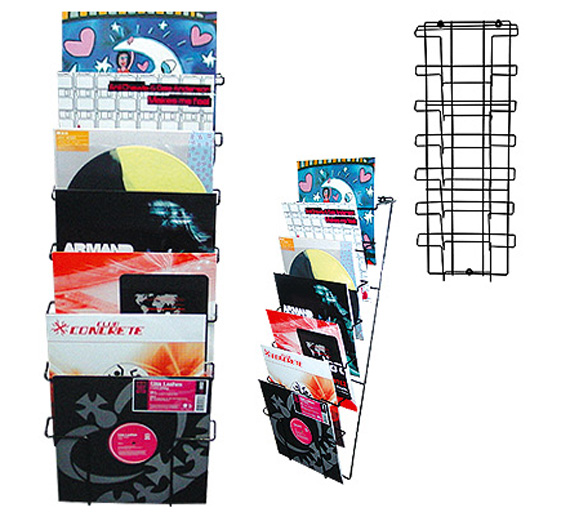
We came across this interesting vinyl record rack over at Hard to Find Records. The metal unit attaches to your wall and keeps 80 records within reach. We like it as a secondary storage unit for keeping your favorites nearby. Here's a bit about it from the HTFR site:
This innovative vinyl set holder fixes to any flat wall and provides a perfect, and very stylish, storage solution for around 80 vinyl records. Six of the seven vertical tiers will hold approximately 10 records each, while the dual function top tier has adequate spacing for around 10 records in each of it's two spaces. This vinyl set holder is a very attractive storage method that will help protect your records while keeping them in perfect grasp for your mixing sessions.
HTFR is based in the UK but they can ship worldwide. Exchange rates put this unit at $49.85 in the US and it is available here.
British album covers on stamps

Next year, the Royal Mail in the UK will launch a stamp program that celebrates classic British album covers. The first class stamps are designed by Studio Dempsey and show a vinyl record sliding out of each sleeve.
Here's a bit from Creative Review where we found this:
Deciding what album covers to include was no easy task. Royal Mail tell us that they began the process by trawling through various existing polls of Greatest Album Covers. They also enlisted the help of editors from various leading UK music publications along with graphic designers and design writers who were asked to list the most significant album sleeve artwork used on records by British artists. The final selection of ten sleeves (which perhaps oddly doesn't feature one of The Beatles' album covers) will appear on a set of 10 stamps that will launch on January 7, 2010 - and the stamps will be uniquely shaped, as shown in these images, to accommodate a glimpse of a vinyl disc poking out of each record sleeve.
Pretty cool.
Michael Gammon of Transcriptors
 If you have ever seen Stanely Kubrick's 1971 film 'A Clockwork Orange', you might recall an amazing turntable in Alex's bedroom. It is called the Hydraulic Reference and was made by a company called Transcriptors.
If you have ever seen Stanely Kubrick's 1971 film 'A Clockwork Orange', you might recall an amazing turntable in Alex's bedroom. It is called the Hydraulic Reference and was made by a company called Transcriptors.
From 1963 to 1979, Transcriptors produced some truly unique turntables. David Gammon, the founder, won several awards for his iconic designs and today, you can find his work in places like the Museum of Modern Art here in NYC.
We had a chance to hear from Michael Gammon, the eldest son of founder David Gammon, to get an inside look at what it was like to grow up with Transcriptors.
First, a bit of history from the Transcriptors site.
David GammonFounded in 1960 by the late David Gammon, Transcriptors was one of the World’s leading manufacturer of manual turntables, tone arms and accessories, and one of the most modern Hi Fi manufacturing plants in Europe during the 60’s, 70’s and the early 80’s.
Many readers will be familiar with our turntables, which have been widely used in numerous television commercials, and in many films, including the classic 1971 film ‘A Clockwork Orange’ which used our 1964 Hydraulic Reference turntable in various scenes throughout the film.
Our products have been copied and reproduced all over the world, from the ‘Concept 2000’ and the ‘Audio Linear’. Even today’s modern turntable design’s bear there origins to the striking designs that were designed by David Gammon, perhaps no better compliment could be paid to his famous turntables.
Sadly David passed away in December 2005 after a long illness. He leaves five children Michael, David, Natasha, Ben and Olga, and four grandchildren.
 The record he played was Jean Michel Jarre's Oxygene and to this day I still use it as one of my main records when we do the hi-fi shows. As a young boy I could not get it into my head how you produced music from electronic components. This also lead me to play drums for twenty years and also piano, both self taught.
The record he played was Jean Michel Jarre's Oxygene and to this day I still use it as one of my main records when we do the hi-fi shows. As a young boy I could not get it into my head how you produced music from electronic components. This also lead me to play drums for twenty years and also piano, both self taught.
I love records, the way the outer sleeve is designed, removing the record and placing it on the turntable then sitting back in a chair and closing your eyes and being immersed into the sound.
Dad always said "you listen to music, you don't watch it!"
What was your earliest memory of your father's work with Transcriptors?
The earliest memory I have is when I used to come home from school and there would be a different turntable on the shelf, the first one i can remember is the Round Table. I later found out that Dad did this with all new models and would have my Mum testing each new model.
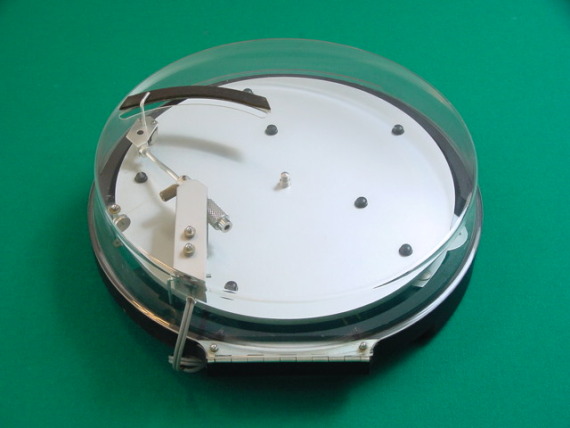 1975 Round Table
1975 Round Table
What is you're favorite story from that time period?
My favorite story is when Dad bought my Mum a new Mini car. He had just picked it up from the dealership and was smoking a cigarette when he could smell the fumes of petrol. He looked down at his feet and saw that a massive amount of petrol had leaked into the footwell of the car. So he carefully stopped the car, carefully open the door and ran!
The Hydraulic Reference is a design icon. Is this your favorite model or do you have another that you love?
The Hydraulic is one of my all time favorite turntables as this is the one that can tell you what it is without ever looking at the badge. It is a design classic and when you look in the old hi-fi year books and one page you have a standard turntable in a wooden box then you turn the page and you have a Hydraulic there is no comparison. That's probably why the late Stanley Kubrick came to see my father and borrow one for his film 'A Clockwork Orange', dad never saw it again!
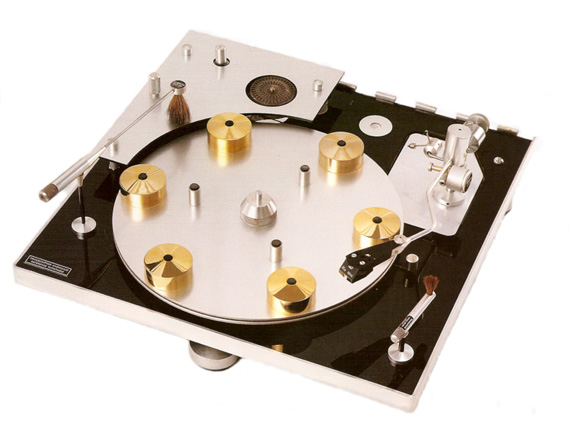 Hydraulic Reference
Hydraulic Reference
However I love all the other models he did, because as an engineer you are always out to improve on an existing idea so hence the design timeline from the 1963 Reference to his last turntable the Transcriber in 1979.
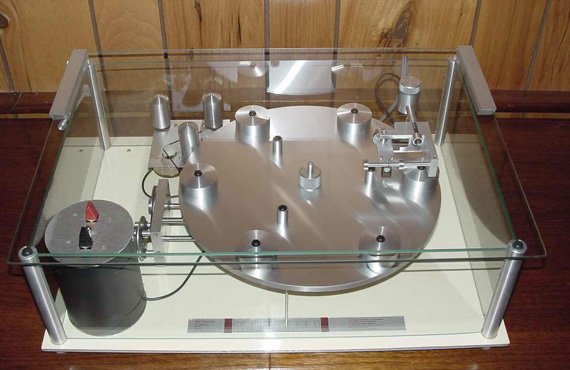 Transcriber
Transcriber
It says on the history page that the family moved to New York in 1974 to serve the US market with the Skeleton and the Round Table. What was that like?
It was an eye opener that was for sure. Moving from the south of Ireland to the big apple was a big step. The hi-fi industry in Europe was starting to decline so Dad found a new exciting market in the US. We moved in to a penthouse overlooking Central Park and Dad used to take us there every day. On the same floor in our apartment block we had the 1970's group The Platters who always use to make fun of our english accents.
Dad had a house in Long Island lined up but then decided at the last moment that he could not stand the heat so we came back to Ireland. Also he had been to the World Trade Center to rent an office there but was cautious about safety. He was also afraid of heights and also could not foresee what would happen on that tragic day (god bless them all).
You re-launched Transcriptors in 2000. Tell us a bit about why you decided to do that and what Transcriptors does today.
I was trawling the internet and came across a post about somebody looking for David Gammon of Transcriptors. I replied and within two days I was having an eight hour conversation with a collector from Florida. He had all of Dads turntables and suggested I do a web site.
I originally posted a short one page of information but then started to get enquiries for spares etc. So after spending ten years in injection moulding as a cnc toolsetter I restarted the company. In late 2002, I was asked when the new turntable was coming out, I just told them there had not been one made since 1979.
I taught myself autocad over a weekend and then came up with the T6 turntable which we still make today. We also service and repair and also offer a full spares service for all the models my late father produced.
Tell us a bit about the future of Transcriptors. Any plans for new models / expansion?
We will still be producing turntables as long as there is a hunger for the format. The current line up of turntables in the T6, Reference Series II (based on dads hydraulic reference) and the Spyder. We move in to a factory in 2010 as at the moment 75% of our components is produce by sub-contractors so we are aiming to bring it all in house.
Today, more and more people are discovering / rediscovering vinyl records. Do you have any words of advice to someone just getting started with vinyl?
Go in with an open mind. Salesmen will do anything to get a sale so visit many hi-fi shops and listen to the setup that they have running. Also remember that what you are hear in a demo room might not sound exactly the same in your own room at home.
Also you will get a lot of info regarding specification, remember specification is nothing, performance is everything. Just sit down and listen as you are equipped with the very best test equipment that money cannot buy and is supplied as standard to every human being and that is your EARS!
Any words of wisdom for someone that has never been exposed to vinyl records and turntables?]
Buy yourself a mid price turntable, amplifier and speakers, ditch your compressed music iPod and listen to how music was meant to be listened.
---
Thanks again to Michael for taking time to share his stories and insights with us. We're a huge fan of Transcriptors and we are looking forward to the next chapter in this great story.
Useful links:
Interview: Joel Scilley of Audiowood
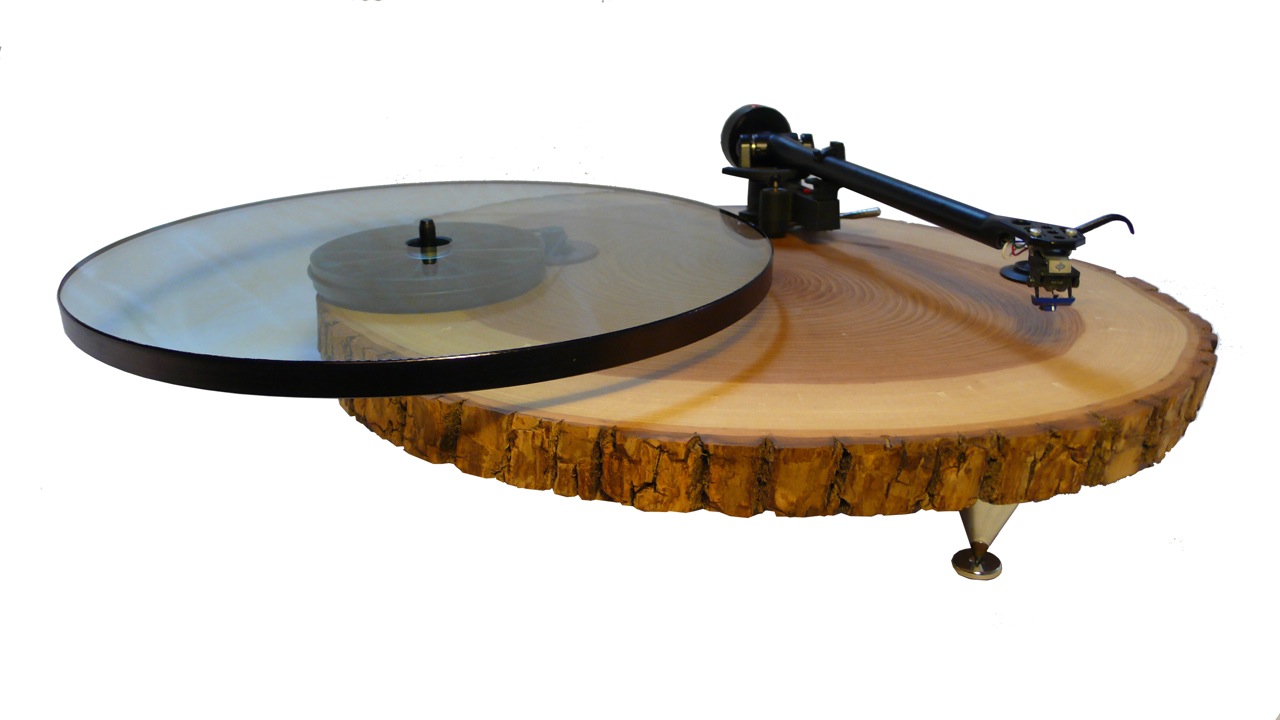
With a passion for design and building, Joel Scilley of Audiowood makes some of the most unique turntables we've ever seen. We love how he combines high-end, rare woods with modern turntable components to create fascinating record players that are warm, inviting, and sound great.
We had a chance to ask Joel some questions about his turntables and his experiences with records.
How did you first get started with records and turntables?
Well, I grew up in the record era, and was listening exclusively to vinyl from the mid-70s till CDs came out. I still remember my poor mother having to shell out extra money for the turntable with the best vibration isolation (in 1980 or so)! And I definitely recall how exciting it was to come home from high school and listen to a new record, and look at the full-sized graphics and lyrics.
What is your favorite thing about vinyl records?
Primarily the sound. There is a richness to vinyl played on a decent system that is hard to beat. But, I also like the ritual of playing records. It is really great to have friends over and see how much
fun they have rifling through my records, pulling out their favorites, arguing about cheesy cover photos, and so on.
What inspired you to start building turntables?
Well, I built a burlwood table for myself several years ago, and every time people would visit my house they would rave about it, so it got me to thinking...
Playing records is a tactile experience, so playing them on a wooden table that you want to touch just makes sense. I hope that I'm making things that people will be thrilled about using.
 KnobbyWhat is your favorite turntable that you've built?
KnobbyWhat is your favorite turntable that you've built?
I'll have to give the good carpenter's response and say: the ones I'm working on right now! In this case, that answer is truthful, as I've got two tables that I'm finishing up that are pretty spectacular. They will both have my new platter design with wooden/brass weighted "pods" under the upper platter. As part of the platter assembly, these pods will be visible and rotate along with the record. And I'll be able to match the wooden pods to the overall turntable construction. Should be very nice.
Can you describe your design and building process?
With my turntables the design process varies a lot. Sometimes it is dictated by a particular piece of wood I want to use, and sometimes I have an idea I have to accommodate to wood construction. In general, my higher-end tables have independent motor housings, and the need to create space for these dictates a design in various ways. Also, the spacing and weight of components dictate many elements of a given design.
There is always a balance between optimal mechanical design (within a given budget) and my attempt to make things which are visually stunning. I suppose I'm trying push the envelope of what's possible for turntable design, especially using wood.
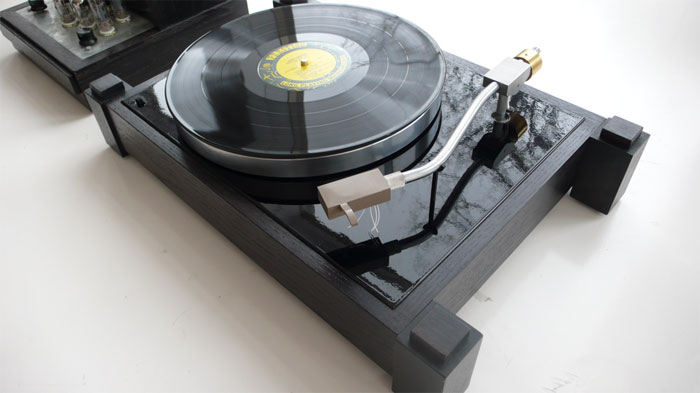 NeroHow much do you generally charge for your turntables? For a custom build?
NeroHow much do you generally charge for your turntables? For a custom build?
The vast majority of tables are between $1000 and $3000, but I have plans for a "Louis the XIV" table that will cost plenty! Also, I'm happy to build whatever someone dreams up.
On your site, it says you build audio furniture. What types of things have you built for analog setups?
I've built and am building: Magnepan speaker stands, custom audio racks, custom wooden iPhone docks, Nixie tube clocks, and custom amplifier enclosures.
I'm currently testing a combination remote-controlled tube preamp and class-D amplifier "integrated" amp that I can build into any type of custom wood enclosure. So far, this combo is very promising.
In the coming months, I hope to make a pretty groundbreaking, modular stereo/AV console that will integrate amplification and speakers. Stay tuned...
Any words of advice for someone new to turntables and records?
Try tube amplifiers. Buy collections from people rather than individual records: more music, less money. Buy a decent turntable (Rega P3, VPI, Audiwood!) and amp and then forget about upgrades and listen to your records! That's all I can think of for now.
Thanks again to Joel for sharing his story. We can't wait to see some what you come up with next!
Useful Links:
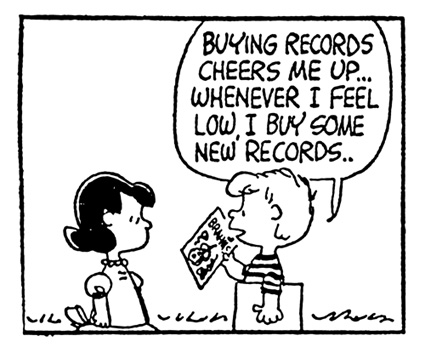
 Share Article
Share Article 